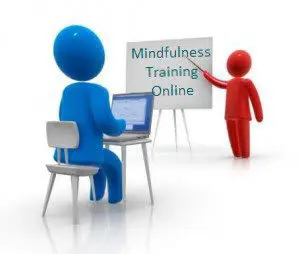Free Mindfulness For Beginners
A Gentle Way to Practice Beginners Mindfulness
Introduction:
Mindfulness is a form of meditation centred on awareness. It is the ability to be present and aware of our surroundings and what we’re doing. When practiced regularly, mindfulness can promote learning, growing, healing, and even transforming.

And according to Jon Kabat-Zinn, mindfulness is for everyone. Since attention and awareness are trainable skills, mindfulness can be practiced by anyone anywhere. Below, we answer your burning questions on mindfulness for beginners. Whether you’ve only been practicing mindfulness for a short time or have yet to give it a go, keep reading to learn more about mindfulness for beginners.
Here’s a more detailed breakdown:
Mindfulness meditation, by Jon Kabat-Zinn
According to Jon Kabat-Zinn, “Mindfulness can be understood as the non-judgemental acceptance and ‘open-hearted’ investigation of present moment experiences.” It is a purposeful awareness that arises in the present moment.
The 5-basics of practicing mindfulness are as follows:
Dedicate time and space.
You don’t need any special equipment and you don’t need to set aside an hour of your day. But the first step in practicing mindfulness is committing some time and space in your day to the practice.
Observe the present moment.
Believe it or not, the goal of mindfulness is not to quiet or clear the mind. Rather, the goal is to pay attention to the present moment, free from judgment.
Let your judgments float away.
Since the goal of mindfulness is to bring awareness to the present moment without judgment, if you notice judgmental thoughts sneaking in, make a note of them and then let go of them.
Returning to observing the present moment.
It is easy for our minds to get carried away. That is why a large part of practicing mindfulness is reining in your thoughts and bringing them back to the present moment.
Be kind to yourself and your mind.
Perhaps the most important rule of mindfulness is to be kind to yourself and your mind. No matter how many times your mind wanders or judgmental thoughts pop up, don’t get discouraged. Recognize your thoughts have wandered and gently redirect them to the present.
Mindfulness, like any skill, takes practice. Be patient, practice regularly, and it will get easier.
Jon Kabat-Zinn also notes one of the biggest misconceptions about mindfulness:
That you’re supposed to empty your mind completely, and only then will you be free from emotional or physical pain.
He claims there is no special state that must be attained in order to practice mindfulness correctly or effectively. Rather, mindfulness is about venturing into our minds and focusing on our sensations, emotions, and thoughts.
What are the 7 attitudes of mindfulness?
The seven attitudes of mindfulness are as follows:
- Non-judging: Mindfulness is a practice free from judgment. The goal is to bring an unbiased, impartial witness to our own thoughts and experiences in the present moment.
- Patience: Patience means taking the time and space our mindfulness practice necessitates and not getting discouraged when you don’t see immediate results.
- Beginner’s Mind: Beginner’s mind is about seeing things as if for the first time without any preconceived notions or expectations.
- Trust: Learning to trust yourself and your feelings is crucial to mindfulness.
- Non-Striving: Non-striving is centred on letting go of the results to better see and accept things as they are. It is about taking away the pressures you put on yourself and your practice.
- Acceptance: Acceptance is rooted in seeing things exactly as they are in the present moment, and being open and receptive to whatever you may be feeling.
- Letting Go: In practicing mindfulness regularly, you might start to notice common thought patterns. The seventh and final mindfulness attitude is about recognizing these thought patterns, whether negative or positive, observing them as they happen and letting them go.
What are 3 things you can do everyday in order to improve your mindfulness?
Three things you can do each day to improve your mindfulness include:
- Going for a walk.
- Writing in a journal.
- Observing your breathing.
What are the benefits of practicing mindfulness?
Studies have shown that practicing mindfulness has all kinds of benefits. The benefits you may derive from practicing mindfulness regularly include reducing stress levels, minimizing brain chatter (the little voice in your head), helping you make sense of your physical and mental pain, connecting more fully with yourself and others, and improving your attention span and ability to focus. Therefore, if you’re looking to improve your physical health, mental health, or overall well-being, give mindfulness a try.
In Summary:
By consistently practicing these mindful techniques, you will cultivate mindfulness. These practices attention, intention and action will develop a greater sense of calm and presence. Over time this results in reducing stress and anxiety, while increasing health and happiness.
Warmly,
Heidi & Ross